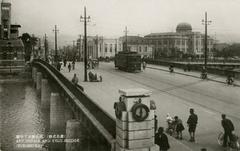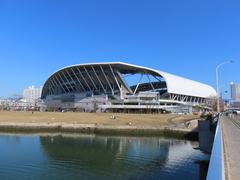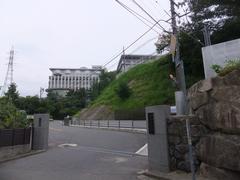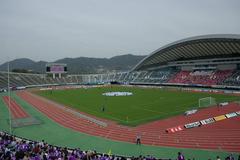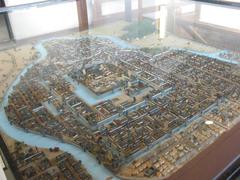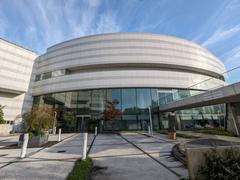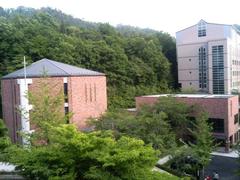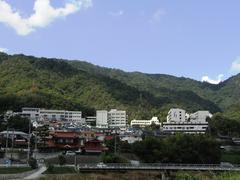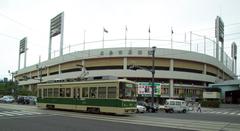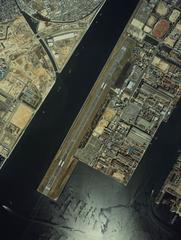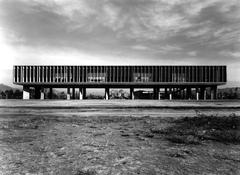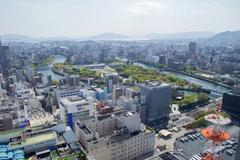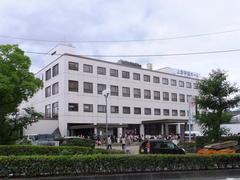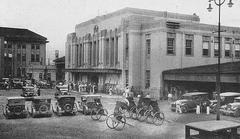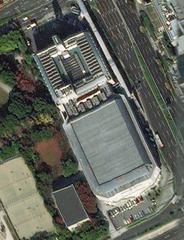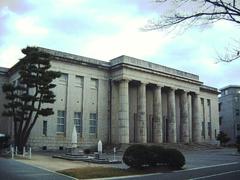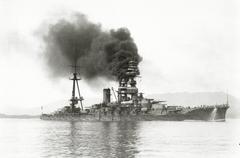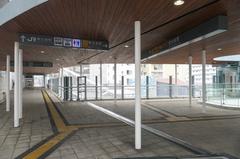Children’s Peace Monument Hiroshima: Visiting Hours, Tickets, and Historical Sites Guide
Date: 04/07/2025
Introduction
The Children’s Peace Monument, located in Hiroshima Peace Memorial Park, is a profound symbol of hope, resilience, and the universal yearning for peace. Erected in memory of Sadako Sasaki—a young survivor of the atomic bombing who later succumbed to radiation-induced leukemia—the monument extends its message beyond Hiroshima, inspiring worldwide advocacy for peace and nuclear disarmament. Sadako’s story of folding 1,000 origami cranes, rooted in a Japanese legend, has transformed the site into a living tribute, drawing millions into the tradition of crane folding as a gesture of solidarity and remembrance (City of Hiroshima; PCF City Hiroshima; Peace Tourism).
This comprehensive guide covers the monument’s history, symbolism, and cultural significance, alongside practical visitor information—such as hours, accessibility, tours, and nearby attractions—essential for planning your visit to this iconic Hiroshima historical site.
Table of Contents
- Historical Background
- Visiting the Children’s Peace Monument
- Visitor Experience
- Frequently Asked Questions (FAQ)
- Conclusion
- References
Historical Background
Origins and Symbolism
The Children’s Peace Monument was inspired by the life and legacy of Sadako Sasaki, who was exposed to the atomic bomb’s radiation at age two and later developed leukemia (City of Hiroshima). Sadako believed in the legend that folding 1,000 paper cranes would grant her wish for recovery and peace. Her untimely passing in 1955 moved her classmates and many others to advocate for a memorial honoring all child victims of the atomic bombing (PCF City Hiroshima).
Design and Features
Completed in 1958 with donations from more than 3,000 schools in Japan and abroad, the monument features a nine-meter-tall bronze statue of Sadako holding a golden origami crane. On either side, statues of a boy and girl symbolize the hope for children’s future (Dive Hiroshima; Peace Tourism). Beneath the arch, visitors may ring the Bell of Peace as a personal prayer for peace (Travel Yes Please).
A black marble slab inscribed with “This is our cry. This is our prayer. For building peace in this world.” encapsulates the monument’s message.
The Paper Crane Tradition
Origami cranes—now an international symbol of peace—are displayed in glass cases surrounding the monument. Each year, about 10 million cranes are sent from around the world, visually reinforcing global solidarity and hope (Flashpacking Japan). Crane offerings can be mailed or brought in person, with instructions available onsite and online (Paper Crane Message Card page).
Commemoration and Global Impact
The Children’s Peace Monument plays a pivotal role in peace education and international advocacy. Its symbolism resonates globally, inspiring similar memorials and peace initiatives, and drawing dignitaries, school groups, and peace activists into the tradition of crane folding and remembrance (Science Hub Blog).
Visiting the Children’s Peace Monument
Visiting Hours and Tickets
- Open: 24 hours a day, year-round (as part of Hiroshima Peace Memorial Park)
- Admission: Free; no tickets required (Japan Experience)
Note: The Hiroshima Peace Memorial Museum nearby may have separate hours and entrance fees.
Accessibility
- Fully wheelchair accessible with paved paths and ramps.
- Multilingual signage available.
- Restrooms and shaded seating areas are distributed throughout the park (The Family Voyage).
Guided Tours and Nearby Attractions
- Guided Tours: Available through the Hiroshima Peace Memorial Museum and local operators, offering deeper historical context (Dive Hiroshima).
- Nearby Attractions: Atomic Bomb Dome, Peace Memorial Museum, Shukkeien Garden, Hiroshima Castle (Explore Hiroshima).
Getting There
- By Tram: Take lines 2 or 6 from Hiroshima Station to Genbaku Dome-mae; the monument is a short walk from the stop.
- By Car: Parking available at the Peace Memorial Park (can be crowded during peak seasons) (Lestac World).
- On Foot/Bicycle: The park is centrally located and easy to access from central Hiroshima hotels.
Visitor Experience
Educational and Emotional Impact
The monument is a focal point for peace education and reflection. School groups, families, and international visitors often engage in the crane-folding tradition before their visit, deepening their understanding of the monument’s message (Japan Experience). The visual impact of thousands of colorful cranes, coupled with the serene park setting, evokes empathy and inspires a commitment to peace.
Annual Events and Ceremonies
- August 6: The Peace Memorial Ceremony marks the bombing anniversary, featuring speeches, peace declarations, crane offerings, and moments of silence (Peace Tourism).
- Children’s Day (May 5): Commemorates the monument’s unveiling with special activities and ceremonies.
Visitor Etiquette and Tips
- Maintain a respectful demeanor; the site is a place of remembrance.
- Photography is permitted but be discreet, especially during events or school visits.
- Origami paper is available at local shops for folding cranes.
- Prepare for seasonal weather; bring water and sun protection in summer (Wanderlog).
Frequently Asked Questions (FAQ)
Q: What are the monument’s visiting hours?
A: The Children’s Peace Monument is accessible 24/7 as part of the open Hiroshima Peace Memorial Park.
Q: Is there an admission fee?
A: No, visiting the monument and park is free.
Q: How do I participate in the paper crane offering?
A: Bring pre-folded cranes or fold them onsite; instructions and materials are available at the monument.
Q: Are guided tours available?
A: Yes, through the museum and local tour operators.
Q: Is the site accessible for those with disabilities?
A: Yes, the park is wheelchair accessible with paved paths and ramps.
Q: What other historical sites can I visit nearby?
A: The Atomic Bomb Dome, Peace Memorial Museum, Shukkeien Garden, and Hiroshima Castle are all within walking distance.
Conclusion
The Children’s Peace Monument stands as a living testament to the enduring hope for peace and the resilience of children in the face of unimaginable tragedy. Rooted in the moving story of Sadako Sasaki and symbolized by the universal image of the origami crane, the monument invites visitors from around the world to join in remembrance and advocacy for a peaceful future. With its free, year-round access and central location among Hiroshima’s historical sites, it is an essential destination for anyone seeking to understand the human cost of war and the transformative power of peace education.
Whether attending a commemorative ceremony, participating in the crane-folding tradition, or simply reflecting in the tranquil park, the Children’s Peace Monument offers a meaningful and unforgettable experience. Enhance your visit by exploring related Hiroshima landmarks and consider using interactive tools or guided tours for deeper engagement.
References
- City of Hiroshima
- PCF City Hiroshima
- Peace Tourism
- Flashpacking Japan
- Travel Yes Please
- Dive Hiroshima
- Japan Experience
- The Family Voyage
- Science Hub Blog
- Explore Hiroshima
- Promos Japan
- Quiltripping
- Lestac World
- Wanderlog
- Best F/X
- Thrillophilia
